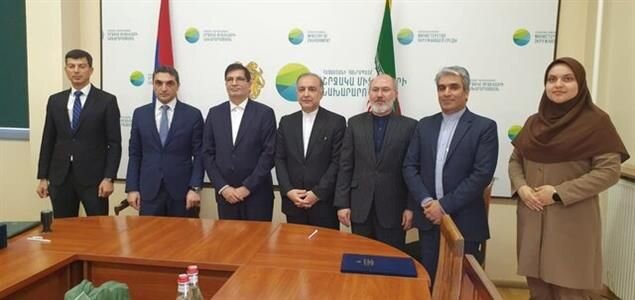Tehran, Yerevan sign MOU to remove Aras pollution in a year

TEHRAN –Iran and Armenia have reached an agreement on removing pollution from Aras River within a year.
Stretching to 1,072 kilometers, Aras River is one of the largest rivers in the Caucasus, and one of the most important rivers in Iran which besides attracting tourism and positive ecosystem effects, has important potential for fishing.
The river has become a source of pollution posing threats to people’s lives residing northwestern part of the country due to the flow of heavy metals out of the Armenian factories over the past decade.
An Iranian delegation led by Iraj Heshmati, the deputy head of Iran's Department of Environment, traveled to Armenia to attend the 25th meeting of the representatives of the two countries, held in Yerevan on November 15 -16, to address the problem of Aras contamination, the Department of Environment reported.
Iran’s ambassador, Mehdi Sobhani, and Armenia’s head of the Department of Environment, Hakob Simidyan, were present in the meeting, as well.
The two countries announced their readiness for cooperation and technical consultation to completely stop the discharge of industrial wastewater into the river.
At the end of this meeting, a memorandum of understanding was signed by Heshmati and Gayane Gabrielyn, his Armenian counterpart.
Accordingly, the officials agreed to take action to resolve the issue of mineral and industrial pollution and completely stop the flow of pollution into Aras River within a year.
The two parties also agreed to conduct several joint investigations by three expert groups, including the joint expert group on mines, particularly copper and molybdenum, the joint expert group for monitoring the water quality of Aras River, and the joint monitoring and supervision expert group.
The expert groups’ meeting will be held each month virtually or in-person to present the results of their findings and technical solutions to the heads of the delegations of the two countries.
It was also decided that the first meeting of the heads of delegations of the two countries to be held in late February 2024 in Agarak and Jolfa with the presence of the heads of three expert groups to decide on future actions.
Heavy metals flowing into Aras River
In 2019, an agricultural researcher, Ahmad Baybordi, told IRNA that there were remnants of heavy metals in the river without a doubt.
Citing over a decade of Aras water pollution as a result of the wastewater inflow from Armenia, he said that the University of Medical Sciences asked me to conduct a water and sediment monitoring study at the Aras River.
The University of Tabriz and the Ministry of Agriculture research center at that time discovered the contamination of Aras River with heavy metals based on the analysis of monitoring carried out, he said.
He went on to lament that the Ardabil provincial water company had also conducted monitoring of water, soil, and aquatic species in the river, and the results showed that the river was contaminated with heavy metals.
Pointing out that conservatism is not allowed when it comes to public health, he added that Aras contamination is a scientific and environmental issue that must be scientifically investigated and declared.
We started a project with university students residing in a village on the outskirts of Aras to monitor water and sediment in the river, he noted, adding that the project was carried out in two areas before Nordoz (as pollution-free areas) and after Nordoz (as polluted areas) and the findings showed the heavy metal contamination.
Aluminum, copper, iron, and arsenic have been found in the river which were 10 times the safe limits, he regretted.
He further said that I have closely watched the activity of Armenian factories, adding “I would definitely say that the industrial effluent flows into Aras and the color of the water is turning green because of the high concentration of heavy metal.”
MT/MG
